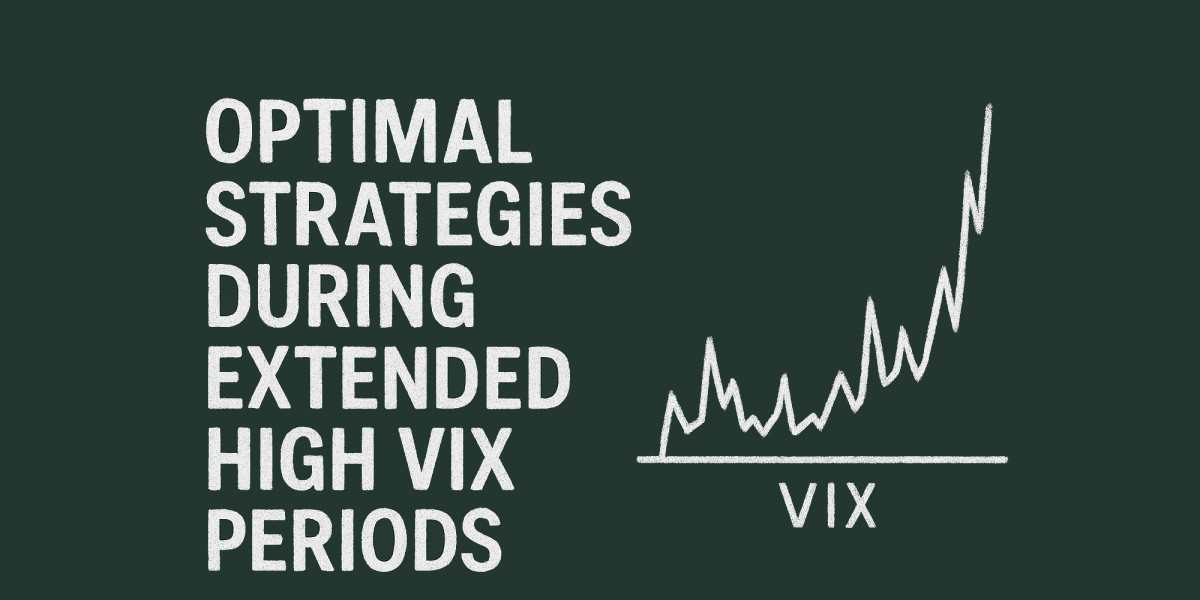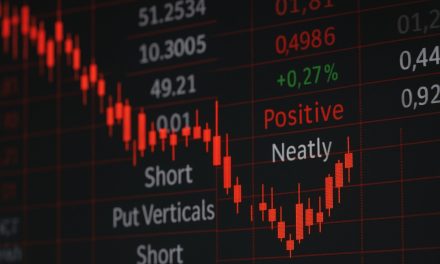Periods where the VIX (Volatility Index) remains elevated—especially above the 40 mark—tend to be turbulent and highly emotional for investors. However, they can also offer outstanding opportunities for wealth-building if approached with disciplined, risk-conscious strategies. Below, we’ll explore why these periods matter and present a comprehensive table of potential strategies, complete with guidelines, examples, and historical performance metrics.
Why Does High VIX Matter?
The VIX reflects market expectations for volatility over the next 30 days. When it climbs above 40, it signals significant uncertainty and fear among investors. Historically, such moments often align with large market drawdowns or rapidly shifting risk sentiment. Counterintuitively, high volatility can present lucrative opportunities to buy quality assets at discounts or use option strategies to generate elevated premiums.
Key Principles for Thriving in Volatile Markets
- Manage Risk First: Use protective options or hedges to avoid catastrophic drawdowns.
- Buy in Tranches: Gradually deploy capital as prices can remain depressed—or get cheaper—for weeks or months.
- Focus on Quality: Strong balance sheets and stable cash flows usually rebound fastest.
- Utilize Option Strategies: High option premiums can be monetized through spreads and covered strategies.
Capital Preservation & Protection During Initial Volatility Spikes (VIX > 45+)
Before seeking profits in a high-VIX regime, your first priority should be preserving capital and avoiding large drawdowns. When volatility initially spikes (VIX 45+), markets often move irrationally, and correlation across asset classes increases, compounding risk. The following protective strategies are designed to cushion your portfolio against this turbulence.
1. Buy SPX Puts (Portfolio Insurance)
- Example: Buy 1 SPX 30-day 5% OTM Put
- Cost: ~$1,200 per contract during high VIX
- Purpose: Protect against sharp S&P 500 declines
- Usage Tip: Ideal for large equity portfolios to hedge beta exposure
2. Long VIX Call Spreads
- Example: Buy VIX May 30 Call / Sell VIX May 45 Call
- Cost: ~$3.00 or $300 per spread
- Max Value: $1,500 if VIX spikes beyond 45
- Purpose: Profit from panic and volatility expansion
- Usage Tip: Defined-risk way to capture sharp fear spikes
3. Buy UVXY or VIXY (Short-Term Volatility ETFs)
- Example: Buy UVXY @ $10.50
- Target: $13–15 during panic surge
- Risk: High decay—only for short-term tactical trades
- Purpose: Quick hedge during violent sell-offs
- Usage Tip: Treat as a trade, not a long-term hedge—exit quickly on VIX stabilization
4. Raise Cash (Preserve Dry Powder)
- Action: Sell weaker positions or trim gains
- Purpose: Reduce portfolio beta and enable opportunistic entries later
- Benefit: Holding cash is a strategic hedge when others are forced to sell
5. Tactical Put Spreads (Low-Cost Hedging)
- Example: Buy SPY 420 Put / Sell SPY 400 Put
- Cost: ~$4.00 or $400 per spread
- Max Value: $2,000 if SPY drops below 400
- Purpose: Lower-cost hedge than outright puts, with capped risk and reward
When to Exit Protection?
- Watch for: VIX peaking and beginning to decline
- Price Action: Capitulation selling with high volume and wide-range reversals
- Transition Tip: Once volatility begins to normalize, rotate from hedges into diagonal spreads, quality stock accumulation, and volatility reversion trades
In extreme volatility regimes, defensive positioning buys you time—both mentally and financially. Use that time to plan a phased entry into recovery strategies without panicking or overreacting to noise.
Examples of High-VIX Strategies in Action
Below are specific examples of how each strategy might be deployed in a high-VIX environment. These are simplified for clarity and do not account for transaction fees, slippage, or real-time market data. Always validate current prices and market conditions before executing trades.
| Strategy | Example Details |
|---|---|
| Diagonal Call Spread |
|
| Cash-Secured Puts |
|
| Long Deep ITM LEAPS |
|
| Volatility Mean-Reversion |
|
| Long/Short Pairs |
|
| Calendar Spreads |
|
| Bond/Equity Barbell |
|
| Selling Put Spreads |
|
| Buying Quality Stocks in Tranches |
|
Sortable Strategies Table
Click on the column headers (particularly Risk Level) to sort the table. Low risk generally indicates milder drawdowns, while higher risk entails larger potential gains but with greater volatility.
| Strategy | Example | Initial Capital | Expected Return | Risk Level | Best VIX Environment | Historical Performance |
|---|---|---|---|---|---|---|
| Diagonal Call Spreads | MSFT Jan’25 $350C / May’24 $380C | $3,000–3,500 per spread | 40–70% in 3–6 months | Medium | VIX 40–60, expected to remain high 1–3 months | Strong in 2008–09, 2020 recoveries |
| Cash-Secured Puts | Sell AAPL Jun $150 Put | $15,000 per contract | 15–25% in 3 months | Medium-High | VIX > 50, market deeply oversold | Excellent in 2008–09, 2020 |
| Long Deep ITM LEAPS | Buy SPY Jan’25 $400 Call | $10,000–12,000 per contract | 80–120% in 12–18 months | Medium-High | VIX > 45, major market correction | Outstanding in 2009, 2020 recoveries |
| Volatility Mean-Reversion | Buy SVXY after initial spike | $5,000–10,000 position | 50–100% in 2–6 months | Very High | VIX > 60, showing initial stabilization | Exceptional in 2009, 2020 rebounds |
| Long/Short Pairs | Long MSFT / Short SNAP | $20,000 per pair | 20–40% in 6 months | Low-Medium | VIX > 40, sector rotation occurring | Consistent in 2008, 2020, 2022 |
| Calendar Spreads | SPY Jun/Apr $450 Call Spread | $2,000–2,500 per spread | 30–50% in 1–2 months | Low-Medium | VIX 40–50, expected to normalize | Reliable in 2010, 2020 volatility normalization |
| Bond/Equity Barbell | 70% TLT / 30% QQQ | $50,000+ | 15–25% in 12 months | Low | VIX > 55, flight to safety | Strong in 2008, mixed in 2020 |
| Selling Put Spreads | Sell SPX Jun 4000/3800 Put Spread | $2,000 per spread | 20–30% in 1–3 months | Medium | VIX 40–50, declining from peak | Good in late 2008, April 2020 |
| Buying Quality Stocks | AAPL, MSFT, JNJ in tranches | $25,000+ | 50–100% in 18–24 months | Medium | VIX > 50, capitulation selling | Exceptional in all crisis recoveries |
Historical VIX-Elevated Periods
Looking at previous crises and how long the VIX stayed above 40 can help you strategize:
| Crisis Period | VIX Peak | Duration > 40 | Best Performing Strategies | Wealth Building Opportunities |
|---|---|---|---|---|
| 2008 Financial Crisis | 80.86 | ~3 months | Cash-secured puts, Quality stock accumulation, Long LEAPS | Generational buying opportunity in financials, tech |
| 2020 COVID-19 | 82.69 | ~1 month | Diagonal call spreads, Volatility mean-reversion, Quality tech accumulation | Fastest recovery in history created massive tech wealth |
| 2011 Debt Ceiling | 48.00 | ~2 weeks | Calendar spreads, Long/Short pairs, Bond/Equity barbell | Quick recovery rewarded tactical positioning |
| 2015 China Slowdown | 40.74 | ~1 week | Selling put spreads, Calendar spreads | Brief spike created shorter-term opportunities |
| 1998 LTCM Crisis | 45.74 | ~3 weeks | Quality stock accumulation, Bond/Equity barbell | Set stage for late 90s wealth creation |
| 1987 Black Monday | Est. 150+ | ~2 months | Stock accumulation, Cash-secured puts | Created foundation for 90s bull market |
Final Thoughts
High volatility environments can be intimidating, but they’re also where some of the biggest opportunities lie. Investors who maintain discipline, employ hedged strategies, and focus on fundamentally sound assets often reap significant rewards once markets stabilize. As the old saying goes, “Be fearful when others are greedy, and be greedy when others are fearful.” Understanding—and capitalizing on—high VIX periods is one powerful way to put that advice into practice.
Disclaimer: The information provided is for educational purposes only and does not constitute financial advice. Always conduct your own due diligence or consult a licensed financial advisor before making investment decisions.



Recent Comments